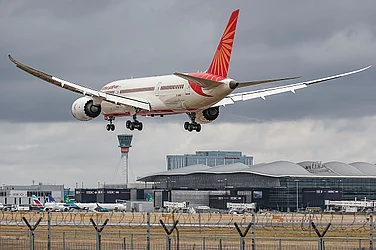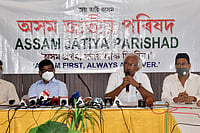When the air force’s Antonov An-32 military transport aircraft disappeared in Arunachal Pradesh on June 3, it wasn’t the first to fly into what airmen since World War II have been calling the ‘graveyard’ of planes.
History & The Hump
The legend of the Hump began between 1942 and 1945, during US operations against Japanese forces in China by crossing the tallest mountains of the North East Frontier Agency (NEFA) or present-day Arunachal Pradesh in the eastern Himalayas.
Eighty one per cent of supplies entering China went from Assam, over the Hump. Aircraft flew from the busiest air strips during World War II—Chabua, Dinjan and Doomdooma, 100 km south of Mechuka in Arunachal by air.
Lost & Mostly Unfound
509 planes were lost in the Hump operations during World War II, plus 81 still ‘missing in action’ in official records. 1,314 crew members died and 345 are still ‘missing in action’.
The Death Trap
In the Hump and its adjoining areas, pilots encounter unpredictable weather with low-hanging clouds and torrential rain, a rugged terrain (snow-capped peaks jutting from deep gorges and thick forests), winds at speeds up to 250mph, and thermal drafts causing turbulence.
***
During World War II, almost 76 years ago, eight US Army Air Corps personnel went down in a B-24J aircraft in the subcontinent’s mountainous north-eastern edge—now in Arunachal Pradesh. It was many years later that some remains were found. Since that first crash, dozens of aircraft, including helicopters carrying civilians and defence personnel, have been lost in this Himalayan region. The most recent was a twin-engine turboprop military transport aircraft, Antonov An-32, of the Indian Air Force that went missing on June 3 with 13 people on board. The spot where it crashed could be identified only after eight days of search-and-rescue operations involving satellite imaging, air force choppers and the navy’s long-range reconnaissance aircraft P-8i.
Another An-32 had crashed in Arunachal in June 2009, killing 13. Since 1995, there have been 13 air crashes in the state. In April 2011, then Arunachal CM Dorjee Khandu was killed when a Pawan Hans chopper crashed near Tawang. Another Pawan Hans copter caught fire the same month, also near Tawang, causing 16 deaths. This was a decade after the state’s then education minister Dera Natung had died with five others in a May 2001 chopper crash in the same area.
Wing Commander (retd) Gobinda Baruah says there is a Bermuda Triangle kind of ‘energy’ that probably pulls down the aircraft. “The area is surrounded by treacherous mountain ranges, and there is also a deep gorge. When an aircraft crosses this area, a kind of electro-magnetic force tends to suck it down,” says the former Indian Air Force (IAF) officer, who claims to have felt the ‘energy’ while flying as a passenger aboard an An-32. Asked about the latest crash, however, he also hints at “error of judgement” of the pilots and “poor maintenance” of the aircraft. “The weather is so horrible and the terrain so difficult that errors are common. Unless you are an expert pilot, it’s tricky to negotiate the ever-changing weather conditions,” adds Baruah.

Map not to scale.
Tine Mena, the first from Arunachal and the entire Northeast to climb Mount Everest, agrees that the unpredictable weather is the “most difficult part”. “You study the weather report and go somewhere, but the weather would have changed by the time you reach there,” sys Mena, who climbed the world’s highest peak in 2011. “The mountains are covered by dense forest, which is possibly why it is always foggy.”
IAF aircraft carry supplies for the defence personnel posted in the far-flung areas along the Indo-China border, often unconnected by motorable roads, as well as for the civilians there. Angry about defence personnel losing lives, Wing Commander (retd) Gyati Kago, who belongs to Arunachal, wants the whole aviation set-up in the state to be re-organised for creating a safe flying environment. “Every aircraft must be equipped with modern equipment such as colour Doppler radar, Traffic Collision Avoidance System or Terrain Awareness and Warning System, Enhanced Ground Proximity Warning Systems and serviceable Emergency Locator Transmitter (ELT),” says Kago, adding that the crashed An-32 had a faulty ELT that didn’t help in locating the crash site. The former IAF officer, who retired in 2012, alleges that the ELT could not be replaced due to red tape in the defence ministry.
The locals, used to the hostile terrain, have always helped in rescue missions. After an Mi-17 chopper located the An-32’s crash site at an altitude of 12,000 ft on the Pari hills in Siang district, the IAF asked local mountaineers, including Mena, to trek all the way. “It is impossible to get close to the site without local help,” says Obang Mibang, nodal officer of the Systematic Voters’ Education and Electoral Participation programme in adjoining Upper Siang district, who had travelled for four months, much of it on foot, to cover 68 polling stations before the general elections. “Science and technology are helpless here. Only locals familiar with ever-changing situations can proceed with calculated risks. The forests are also full of deadly animals.”
Last heard, the black box comprising cockpit voice recorder and the flight data recorder had been retrieved. The remaINS of the passengers and the crew were yet to be found.
By Abdul Gani in Guwahati


























